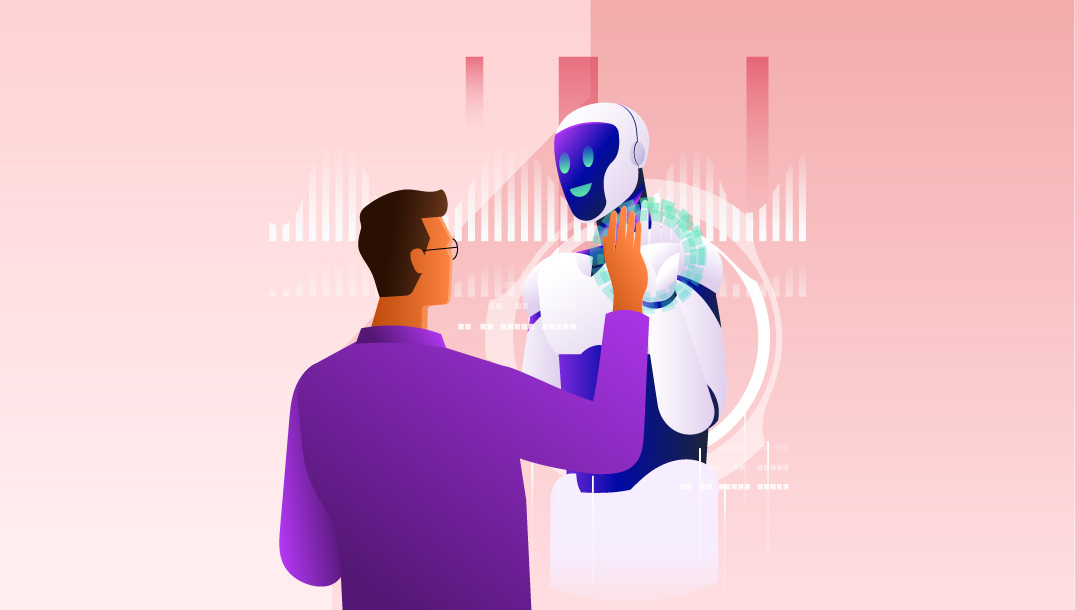Designing for AI Agents in the Era of UI, UX, CX & BX


-
Written by
vsampath
-
Category
AI Agent, UI Design, User Experience
-
Date
April 17, 2025
As artificial intelligence evolves from passive tools to active agents, a new design paradigm is emerging: Agentic Experience Design. This involves creating experiences not only for human users, but also for AI agents that act independently on behalf of users—booking appointments, making decisions, and even engaging with other systems.
To stay ahead, brands and designers must rethink traditional experience design elements like UI, UX, CX, and BXthrough the lens of agentic interaction.
What Is an Agentic Experience?
An Agentic Experience refers to how an AI agent interacts with digital systems to achieve user goals. Unlike traditional UX, which centers on human actions, agentic experiences consider how an AI agent perceives, navigates, and completes tasks in digital environments—on behalf of the user.
These agents could be:
Personal AI assistants (e.g., Apple’s Siri, Google Assistant)
LLM-powered tools (e.g., ChatGPT plugins, custom GPTs)
Autonomous systems (e.g., travel bots, shopping bots, customer service agents)
Rethinking the Experience Stack for AI Agents
1. UI: Beyond Visuals – Toward Structured, Machine-Readable Interfaces.
While UI (User Interface) traditionally focuses on visual layout for humans, Agentic UI needs to support semantic clarity and API-level accessibility so that AI agents can navigate and understand the interface effectively.
Key Considerations:
Structure data for clarity (e.g., use of schema.org, ARIA roles, metadata)
Offer robust APIs or action endpoints
Design fallback mechanisms in case of ambiguity
Example: Instead of expecting users to click “Book Now,” expose that booking flow via API so an agent can execute it autonomously.
2. UX: From User Journeys to Task Automation
Traditional UX is all about optimizing user flows. In an agentic world, UX design must support task-oriented automation—where the AI agent is executing the flow, not the user.
Key Considerations:
Simplify workflows into modular, callable tasks
Provide context-rich feedback that agents can parse
Design for edge cases and fallback options when AI agents encounter errors
Example: An agent tasked with booking a flight needs clear signals—confirmation steps, error states, and available options—structured in a machine-usable way.
3. CX: The Human-AI Hybrid Journey
Customer Experience (CX) now includes not just the direct human interaction, but also indirect AI-mediated interactions. A customer might never speak to a brand directly—their AI agent does it for them.
Key Considerations:
Ensure consistent experience across both human and AI touchpoints
Offer transparency into agent-driven actions for trust
Support escalation paths to human support when agents hit limits
Example: A customer’s AI assistant reaches out to a brand’s support bot to resolve an issue. The entire CX must still feel cohesive and aligned with brand values.
4. BX: Designing Brand Personality for AI Interfaces
Brand Experience (BX) must extend into the agentic space. How does your brand come across when interacted with via an AI agent—without the visuals, without the human emotion?
Key Considerations:
Define tone of voice in structured formats (for NLP/LLM parsing)
Ensure consistency across platforms and agent interactions
Inject micro-interactions that convey brand essence through logic and language
Example: A wellness brand’s agent should always sound calm, empathetic, and supportive—even if it’s only interacting with another AI agent.
Agentic Framework: Powering the Design Shift
To support agentic experiences, many teams are adopting the Agentic Framework—a methodology that combines context-awareness, goal-based execution, and system interoperability. It helps designers and developers:
Define task structures AI agents can understand
Embed context breadcrumbs for better agent decision-making
Build in constraints, fallbacks, and ethical boundaries
Why This Matters: The Future Is Agentic
We’re moving toward a world where users will delegate tasks rather than perform them. This means:
Interfaces must be machine-readable and task-oriented
Flows must be optimized for completion, not just comprehension
Brand experiences must extend to AI agents as proxies for users
By designing for Agentic Experiences, you’re not just building for people—you’re building for their digital counterparts. And in this hybrid world, AI fluency becomes just as important as human empathy.
Final Thoughts
The convergence of UI, UX, CX, BX, and the Agentic Framework signals a shift from designing for users to designing for users and their AI agents. This is the next frontier in digital experience.
As AI agents take a more active role in our lives, businesses that embrace agentic design will be better positioned to serve the next generation of digital consumers—both human and machine.